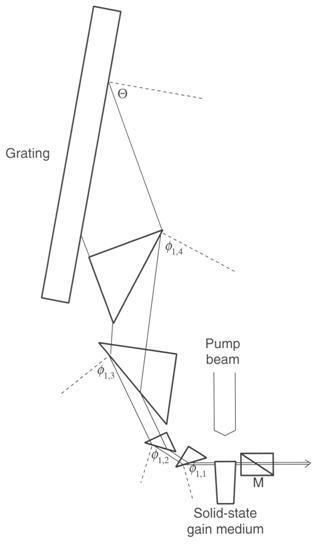 | ||
Solid-state dye lasers (SSDL) were introduced in 1967 by Soffer and McFarland. In these solid-state lasers, the gain medium is a laser dye-doped organic matrix such as poly(methyl methacrylate) (PMMA), rather than a liquid solution of the dye. An example is rhodamine 6G-doped PMMA. These lasers are also referred to as solid-state organic lasers and solid-state dye-doped polymer lasers.
Contents
Organic gain media
In the 1990s, new forms of improved PMMA, such as modified PMMA, with high optical quality characteristics were introduced. Gain media research for SSDL has been rather active in the 21st century, and various new dye-doped solid-state organic matrices have been discovered. Notable among these new gain media are organic-inorganic dye-doped polymer-nanoparticle composites. An additional form of organic-inorganic dye-doped solid-state laser gain media are the ORMOSILs.
High performance solid-state dye laser oscillators
This improved gain medium was central to the demonstration of the first tunable narrow-linewidth solid-state dye laser oscillators, by Duarte, which were later optimized to deliver pulse emission in the kW regime in nearly diffraction limited beams with single-longitudinal-mode laser linewidths of
Distributed feedback and waveguide solid-state dye lasers
Additional developments in solid-state dye lasers were demonstrated with the introduction of distributed feedback laser designs in 1999 and distributed feedback waveguides in 2002.
